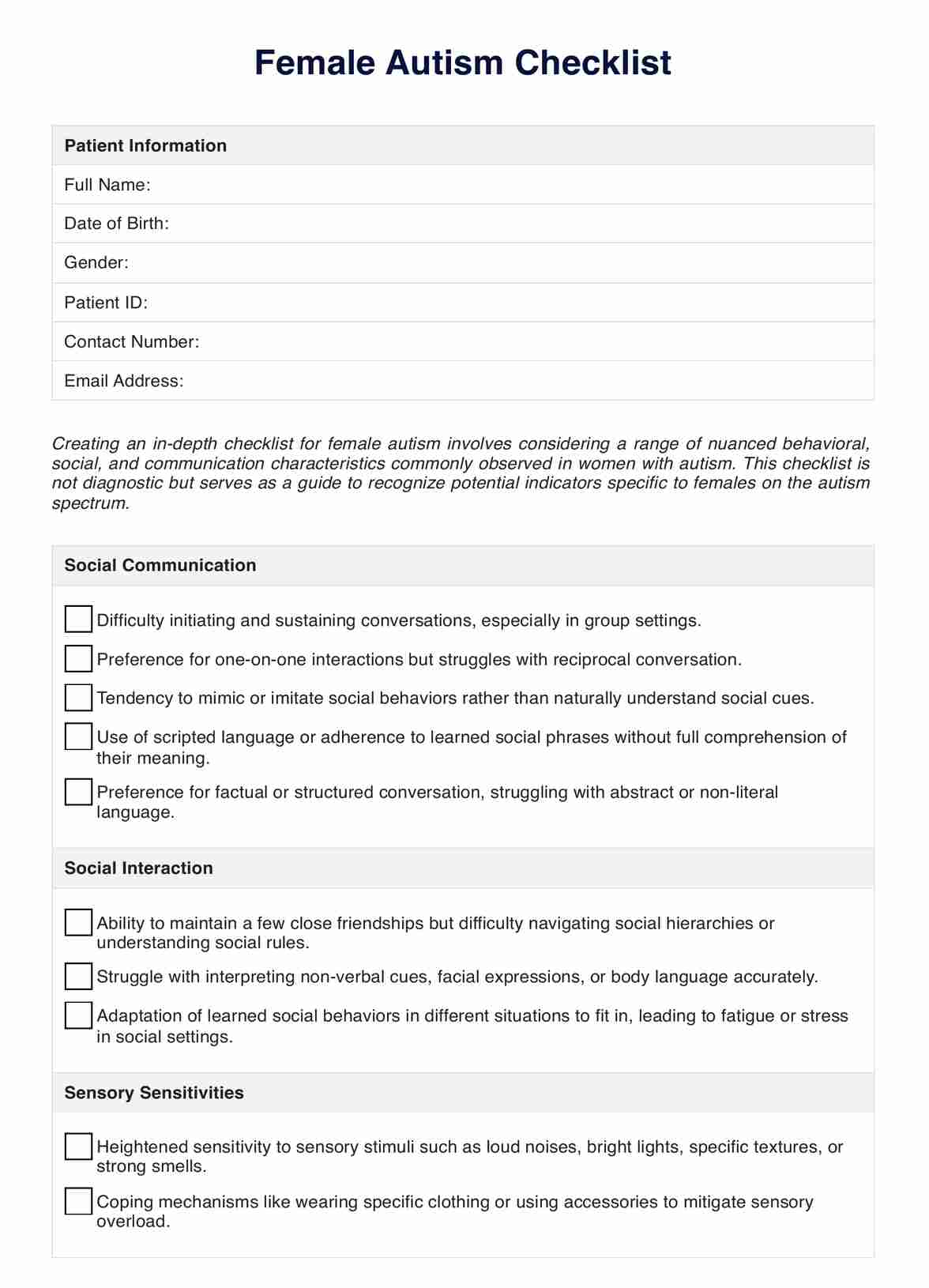Autism in females often presents with subtler or less stereotypical symptoms, leading to challenges in recognition and diagnosis. Females may exhibit better social masking, camouflage their difficulties, and develop coping strategies, making their symptoms less noticeable than males.

Female Autism Checklist
Discover nuanced signs and traits of autism in females with our comprehensive checklist and guide. Access this detailed resource for a deeper understanding of autism's diverse presentations in women and empower yourself or your client with tailored insights for free!
Female Autism Checklist Template
Commonly asked questions
The atypical presentation of autism in females, coupled with societal expectations and gender biases in diagnostic criteria, leads to underrecognition. Symptoms may be misinterpreted or attributed to other conditions, resulting in delayed diagnosis or misdiagnosis.
Signs of autism in females include difficulties in social interaction despite efforts to fit in, sensory sensitivities, intense interests in specific subjects, masking of social behaviors, challenges in interpreting social cues, and struggles with emotional regulation.
EHR and practice management software
Get started for free
*No credit card required
Free
$0/usd
Unlimited clients
Telehealth
1GB of storage
Client portal text
Automated billing and online payments











